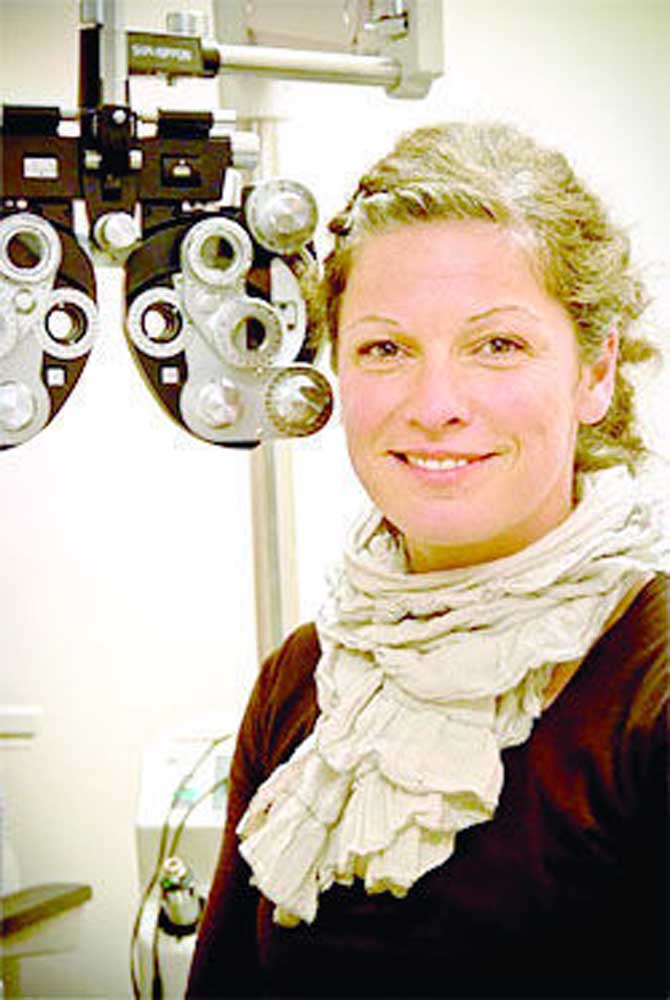Contact lenses offer an alternative to laser treatment
Published 5:00 pm Friday, June 28, 2013

- <p>Dr. Nina Nemetz</p>
LASIK surgery is a great way to achieve prescription glasses independence for distance vision. It is safe and permanent.
But what if you are not quite ready to take the leap of faith to undergo surgical vision correction?
Contact lenses correct vision in a noninvasive and nonpermanent way. People wear contact lenses for many different reasons; aesthetics is not always the main motivating factor. Contact lenses provide better peripheral vision than glasses. In some cases of ocular disease, such as keratoconus, a condition that results in misshapen corneal surface, they actually provide a better visual outcome than glasses simply by creating an artificially perfect corneal surface.
Contact lenses also do not collect moisture from precipitation or sweat, which makes them ideal for sport and outdoor activities. Wearing contact lenses allows safety goggles and nonprescription fashion sunglasses to be worn easily, and contacts can be used to alter the appearance of the eye by changing the color and for therapeutic reasons, to correct a misshapen iris.
Based on their material, lenses are divided into different categories by a wear and replacement schedule. Any contact lens interferes to some extent with oxygen passage to the cornea. Wear and replacement schedules are based on the contacts ability to allow oxygen to permeate through the material. Wearing lenses beyond their recommended wear schedule can pose serious and permanent threats to your eyes and vision.
Because silicone hydrogel lenses have five to six times the oxygen permeability compared to conventional hydrogel lenses, these lenses are FDA approved as extended wear and continuous wear contacts. An extended wear schedule allows six days and nights; continuous-wear allows for wear up to 30 consecutive days/nights.
Hydrogel lenses tend to fall into the category of daily wear, which requires lenses to be removed and stored prior to sleeping to be reinserted the following day.
Contacts need to be replaced on a regular basis. Single-use lenses or dailies need to be discarded after one use. They are thinner and lighter, which improves comfort, and because they are replaced every day, less build-up makes them the preferred option for people prone to eye allergies or infections.
Two- to four-week disposable lenses are the most commonly used lens type, though quarterly and annual replacement lenses are available as well.
Rigid gas permeable lenses are very durable, and, if cared for properly, may last for several years before they require replacement.
In the U.S., contact lens manufacturers are required to adhere to FDA regulations, and the prescribing eye care professional will prescribe contacts according to these standards.
Contact lens prescriptions expire annually and require a comprehensive eye health examination for renewal to ensure that the patients eye remains healthy to support continued lens wear.
Improper wear and/or care results in approximately 5 percent of contact lens-related complications each year. Symptoms of such complications include pain, light sensitivity, foreign body sensation, redness, itch, burning, discharge and decreased vision. They require immediate removal of the contact lens and a thorough evaluation by the eye doctor. All lenses but dailies require cleaning and disinfecting to prevent complications. Multipurpose solutions are most commonly used for rinsing, disinfecting, cleaning and storing soft lenses. They are effective against bacteria, fungi and acanthomoeba, organisms responsible for infections and corneal ulcers in contact lens wearers.
Hydrogen peroxide systems are very effective contact lens disinfectants in wearers sensitive to preservatives. Saline solutions do not disinfect and must be used in conjunction with a disinfecting system. Water will not adequately disinfect a lens and can actually lead to contamination that has been known to cause irreparable harm to the eye.
Contact lenses have multiple functions. Their main purpose is to correct vision. Spherical lenses are used for nearsightedness and farsightedness, toric lenses are used to correct for astigmatism. Both rigid and soft lenses can be used to correct for these refractive errors.
Toric lenses require proper alignment on the cornea and must have specific design properties that prevent rotation out of ideal alignment. Most lenses do so by weighting the bottom of the lens. Toric lenses require a slightly more specialized contact lens fitting approach than do spherical lenses.
Presbyopia, the need for reading enhancement in people 40 and above, presents yet another challenge in the fitting procedure. Two main strategies are available. Multifocal contact lenses, just like their spectacle counterpart, have two or more focal points, one for distance and one for near.
Monovision uses single vision lenses, spheric or toric, to let one eye focus at a distance while the other eye does the near focusing. In most cases, the brain is able to integrate both eyes to achieve good distance and near vision at all times.
Modified monovision uses a multifocal lens, usually for the near eye, so the intermediate or computer range can be brought into focus as well.
Contacts can be used cosmetically to change the appearance and color of the eye. They also have therapeutic value; they often are used as a lens in corneal abrasions and ocular degenerative conditions.
Contact lenses are considered medical devices and should be used in conjunction with periodic eye examinations, especially if used as long-term vision correction. Because contact lens wear can pose significant risks to your eye health, the fitting process for a new contact wearer generally consists of a comprehensive eye health examination that establishes an optimal prescription and determines ocular health suitable for contact lens wear.
Dr. Nina Nemetz works at Coastal Eye Care and can be reached at (503) 738-5361, or coastaleyecare.com









